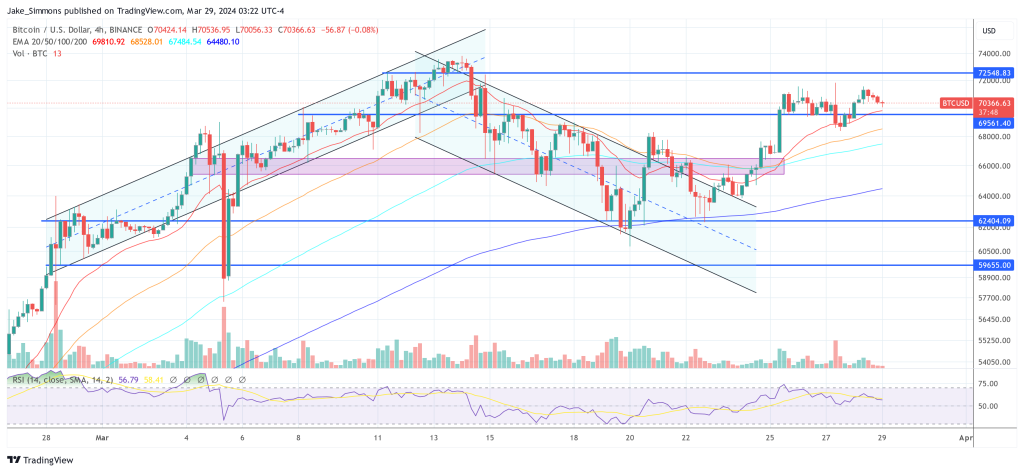On Thursday, Bitcoin Ordinals founder Casey Rodarmor unveiled the documentation for a new Bitcoin-native digital commodities protocol known as Runes. This groundbreaking update is set to coincide with Bitcoin’s upcoming halving, marking a significant evolution in the Bitcoin protocol’s capabilities for handling digital assets directly on its blockchain.
RUNES HAVE DOCS
A plain-english description of the protocol is here:https://t.co/2d8eHGtLjJ
And a lower level not-actually-a-specification is here:https://t.co/w87yWmTk0g
Feedback and suggestions are welcome, here or on GitHub!
— Casey (@rodarmor) March 28, 2024
What Are Bitcoin Runes?
Runes introduce a novel fungible token protocol on Bitcoin, utilizing an indexer-based model that builds upon the social consensus mechanisms first popularized by the Ordinals initiative. This new protocol facilitates the etching, minting, and transferring of Bitcoin-native digital commodities, potentially altering the landscape of how digital assets are created and exchanged on the Bitcoin network.
According to analysis by ren (wassie arc) (@0xren_cf) from Electric Capital, shared via X (formerly Twitter), “The biggest update since Ordinals is coming to BTC at the halvening… RUNES.” Ren’s analysis highlights several key features and improvements that Runes brings to the table:
- Simplified Transactions: Unlike the BRC-20 token standard, which requires multiple transactions for deployment, minting, and claiming, Runes streamline these operations into a single transaction.
- Extendability and Future Proofing: Runes feature an even-odd field tagging system within their protocol, allowing for future extensions and programmability through soft forks.
- Larger Namespace for Tokens: Runes expand the available character space for token names up to 28 characters, compared to BRC-20’s four-character limit.
- Security Enhancements: Runes addresses several security concerns, including the prevention of spoofing through the exclusion of Unicode symbols and mitigating the risk of token balance lockup by attackers.
- Unique Token Naming: Runes enforces unique naming for tokens, preventing the creation of tokens with duplicate names. “Rune names shorter than 13 characters will be gradually released over a 4 year period after the runes launch to prevent immediate grabbing of the shortest names,” Ren remarked.
One of the most innovative aspects of the Runes protocol is its approach to token issuance and transfer. Utilizing a UTXO-based system, Runes tokens are directly issued into a UTXO during the transaction that sets their initial supply, ticker symbol, and decimal precision. This mechanism not only aligns closely with Bitcoin’s native design principles but also enables more efficient and flexible management of token balances and transfers.
The introduction of Runestones, described as the “precompiles” for Runes, further enhances the protocol’s capabilities. These instructions, stored within the OP_RETURN of a transaction, facilitate the movement of Runes from inputs to outputs and ensure future compatibility through an even-odd tagging system.
However, users are cautioned to be mindful of the specific tags used, as even-tagged Runestones can lead to the effective burning of the involved Runes, a process referred to as creating a “Cenotaph” by Rodarmor.
Vision For The Future
Looking forward, the Runes protocol aims to support a wide array of applications and interactions, from intricate inscriptions that could, for example, influence the abilities of digital collectibles based on the amount of a specific Rune held, to facilitating off-chain liquidity pools for Rune trading. This opens up new possibilities for decentralized finance (DeFi) on the Bitcoin network, a prospect that has garnered excitement within the community.
Ordiswap Labs, through a statement on X, emphasized the potential of Runes to enhance the Bitcoin DeFi ecosystem, noting the protocol’s efficient on-chain footprint and compatibility with existing Bitcoin standards, including the Lightning Network. “Runes aims to provide a simple, Bitcoin-native token system with a unique issuance model and efficient on-chain footprint […] Runes are one that we are now specifically looking into, and we cannot be more excited about the potential of the BTC DeFi ecosystem in the coming months!”
Runes Standard on Bitcoin, Explained
TL;DR: Runes aims to provide a simple, Bitcoin-native token system with a unique issuance model and efficient on-chain footprint — its UTXO (unspent transaction output) approach differing from standards like BRC-20.
While BRC-20 is the… pic.twitter.com/MYKaLVjVhR
— Ordiswap (@OrdiswapLabs) March 27, 2024
The activation of the Runes protocol is strategically timed to coincide with the Bitcoin halving, with expectations set for a block height of 840,000, around April 20.
At press time, BTC traded at $70,366.










